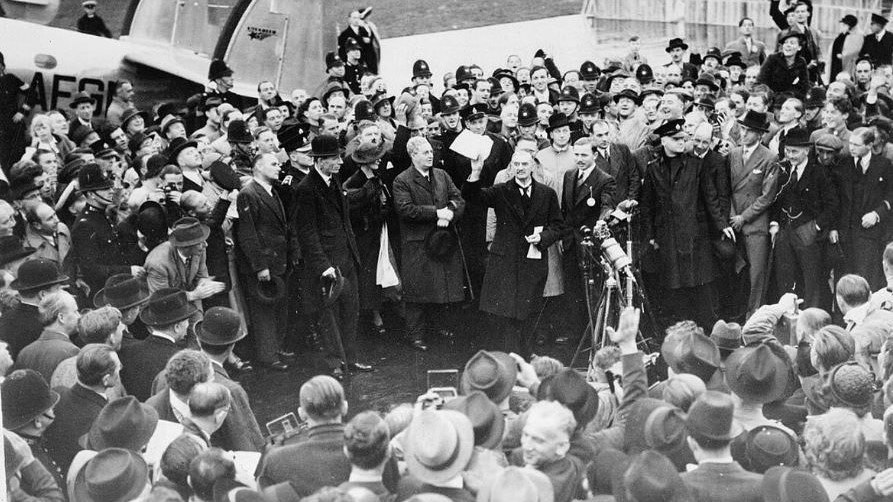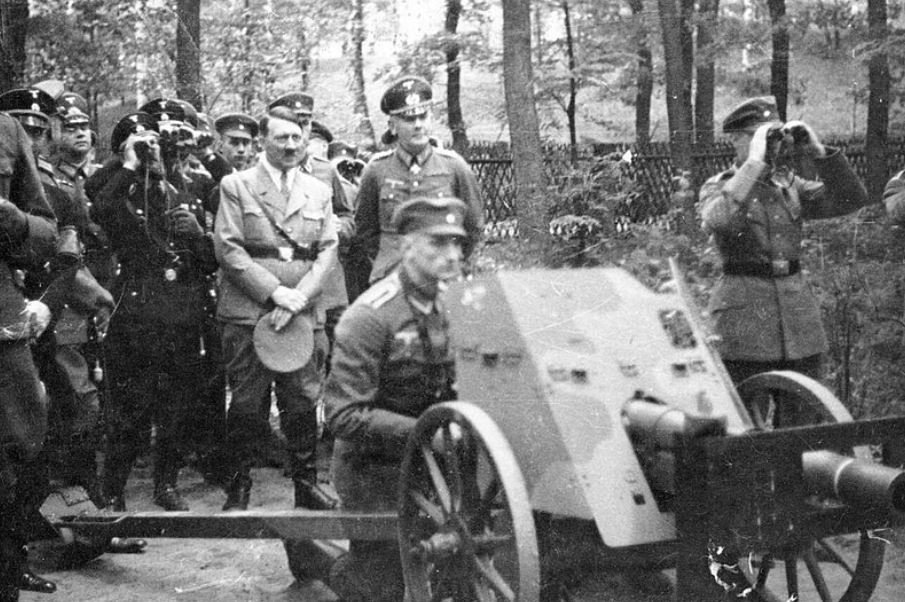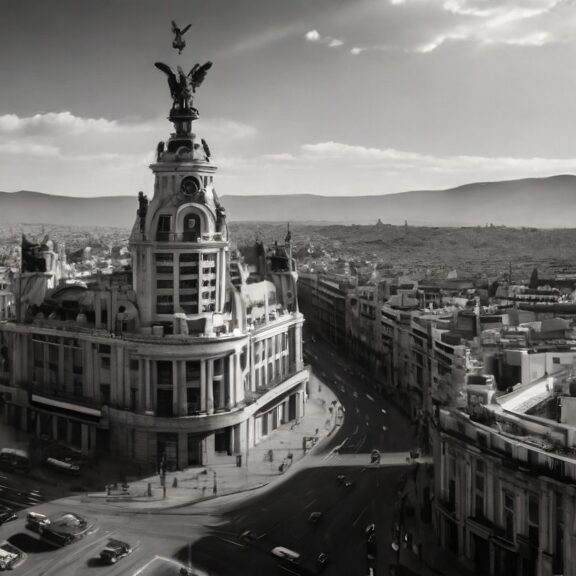Were helicopters used in World War 2? The now-iconic silhouette of the helicopter, with its signature spinning rotor blades, was still a fledgling technology when World War II erupted in 1939. Whilst they were not used in combat, they still had a role.
During World War II, innovation was of strategic imperative, prompting military forces to explore unconventional technologies. Among these, the helicopter emerged as a revolutionary aerial platform.
This article delves into the pivotal question: Were helicopters deployed in combat during World War II? We uncover the fascinating and often overlooked role of helicopters in this global conflict, shedding light on their impact and the seeds they planted for future military aviation.
1. Early Helicopters
The first practical helicopters had only just barely flown in the late 1930s after decades of challenging development. These pioneering aerial vehicles attracted some military interest for their unique vertical take-off and landing capacities. However, significant technical limitations curbed their practical use for combat operations.
The outbreak of World War 2 would change things.
The intensifying pace of warfare spurred rapid development in aviation technology.
Aircraft manufacturers funneled extensive resources into helicopter development throughout the early 1940s. This financial influx and design data from wartime demands accelerated improvements to reliability, load capacity, and safety.
By 1942, helicopters were clearing major milestones, with the Sikorsky R-4 becoming the first mass-produced helicopter.
As production ramped up, military planners eyed increasingly critical peacetime roles for this whirlybird technology to impact the war effort. The helicopter age had fully dawned by conflict’s end in 1945. But it would take the further postwar advances to transform helicopters into the versatile, military instruments we know today.
2. The Sikorsky R-4: The first mass-produced helicopter

The first mass-produced helicopter, the Sikorsky R-4, officially entered service in 1942.
The R-4 was a pioneering craft – the first helicopter design in history deemed reliable and practical enough for combat operations.
Powered by a radial engine, the rotorcraft could carry a pilot plus two passengers.
This new airborne workhorse quickly proved its usefulness for rescue and transport missions. However, significant limitations prevented more vital wartime roles.
With a flyable radius of just 100 miles maximum, range posed a strategic barrier. The R-4’s total payload topped out at less than 500 pounds, restricting cargo capacity. And unlike hardy fixed-wing planes, its lightly armored airframe rendered it highly vulnerable to ground fire.
Yet despite being too fragile for direct combat, the capabilities demonstrated by the R-4 revealed unique potential.
The value of vertical flight and runway independence did not go unnoticed. Military officials realized helicopters could ultimately provide tactical support across the full spectrum of operations – from logistics to electronic warfare and frontline attack.
While the R-4 could uniquely carry a pilot plus two passengers, its slow speed, short range, low ceiling and light armor rendered it unsuitable for direct combat. The later R-5 and R-6 models improved capabilities, but were still reserved primarily for rescue and transport tasks.
| Helicopter | First Flight | Max Speed | Range | Service Ceiling |
| Sikorsky R-4 | 1942 | 90 mph | 130 mi | 8,000 ft |
| Sikorsky R-5 | 1944 | 110 mph | 220 mi | 14,000 ft |
| Sikorsky R-6 | 1946 | 124 mph | 270 mi | 18,000 ft |
3. Wartime Roles and Rescue Missions

While unable to directly participate in head-on combat operations, early helicopters found vital niches away from enemy fire by leveraging their unique capabilities:
The Allied Use of Helicopters
Aerial Reconnaissance
- Spotting enemy movements from the air
- Calling in artillery strikes
- Pinpointing infrastructure targets
Transport & Resupply
- Flying in ammunition, rations, fuel, engineers
- Mobile resupply platform
- Swift crisis response
Medical Evacuation
- Swiftly evacuating the wounded
- Specially outfitted “flying ambulances”
- Emergency jungle extractions
Search and Rescue

- Plucking downed pilots from danger
- Isolated personnel recovery
- Otherwise unreachable missions
These critical combat support roles played out most prominently in the China-Burma-India theater.
Building the strategically vital Burma Road required helicopters to ferry construction engineers, surveying teams and equipment over dangerous mountain terrain through mile-high mountain passes.
Choppers navigated the vast rugged landscape otherwise only accessible by grueling weeks-long troop marches hacking through dense jungle.
Later, R-6 helicopters performed daring evacuation of wounded British and American soldiers from makeshift landing zones carved from the jungle behind Japanese lines.

These feats highlighted the game-changing operational potential of flying machines with vertical take-off and landing capacities.
Similarly on the oceans, Navy ships began utilizing helicopter,including:
- Reconnaissance and logistics support across the vast Pacific theater.
- Technicians rigged early model choppers to transport urgently needed supplies like blood plasma, insulin, and reserve ammunition stocks between vessels hundreds of miles out at sea.
- R-4s and R-5s transported documents, engineers and parts enabling far-flung ships to remain combat ready.
- Makeshift landing pads even emerged on cruisers and battleships, enabling choppers to expand ship-to-shore transport responsibilities later supporting beach assaults.
Though unable to blaze across enemy skies, these helicopters filled critical niches from Burma to the Philippine Sea.
4. The German Flettner Fl 282 Kolibri

As the Allies pressed helicopters into rescue and transport duties, German aviation engineers harbored helicopter dreams of their own.
Their first operational helicopter emerged as the innovative Flettner Fl 282 Kolibri. Developed in 1940, this odd-looking craft with a twin intermeshing rotor system conducted its maiden flight in 1941.
The Kolibri served primarily as an aerial reconnaissance platform along German coastal regions.
Its unique design enabled stable, agile flight. The counter-rotating rotor blades eliminated the need for a tail rotor. This granted the pilot superior visibility and a smaller signature target for enemy spotters or pilots to track in the air.
More powerful engine variants were tested to boost speed and load capacity. But, Allied bombing raids repeatedly hampered production capabilities throughout the later war years.
Only around three dozen operational Kolibris saw action before Nazi Germany ultimately surrendered in 1945.
This innovative helicopter pointed towards even more futuristic rotorcraft on the horizon. Both the promise and perils of helicopters were realized, even if Allied vehicles like the Sikorsky R-4 claimed far more direct operational impact during World War II’s outcome.
5. The Limitations of World War 2 Helicopters
Despite proving uniquely versatile for niche missions, helicopters saw no direct combat roles due to substantial technological limitations. Contemporary rotorcraft simply lacked the speed, maneuverability, armor and heavy weapons needed to survive in battle.
With top speeds barely reaching 125 mph and limited agility, helicopters made easy targets.
Their light frames offered virtually no protection against enemy fighter aircraft or ground fire.
Machine guns and other armaments common on warplanes could not be mounted on rudimentary helicopter airframes either.
Instead, commanders reserved helicopters almost exclusively for non-combat operations away from enemy engagement. Medical evacuation, reconnaissance, transportation and supply delivery took advantage of vertical flight without exposing fragile choppers to anti-aircraft guns or aerial combat.
Sought-after improvements like turboshaft engines, stronger airframes, mounted heavy guns and guided missiles would have to wait until a post-war environment less consumed by mass wartime aircraft manufacturing. But the seeds of ideas took hold through the 1940s before finally bearing fruit years later in the form of specifically designed military gunships.







